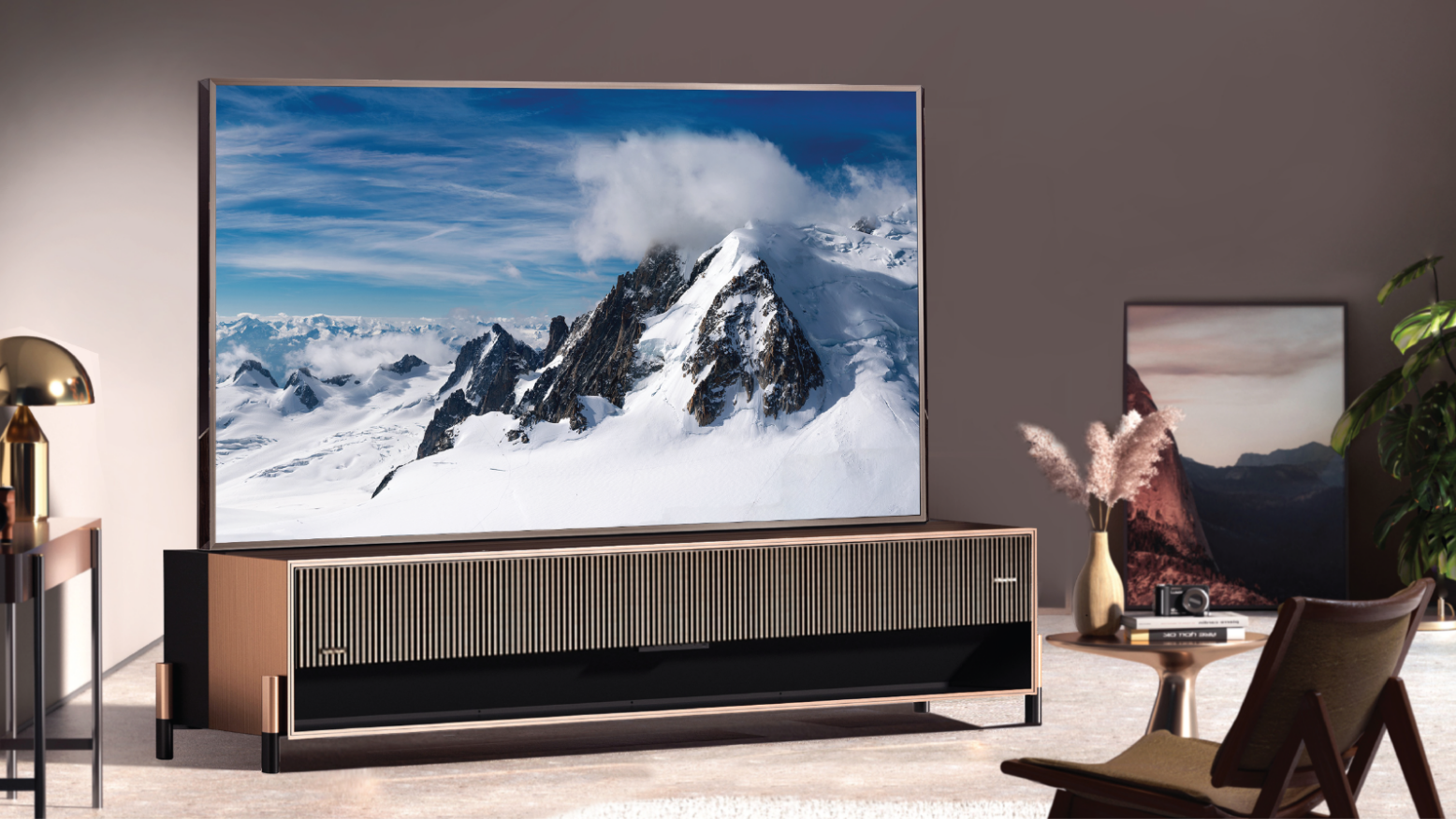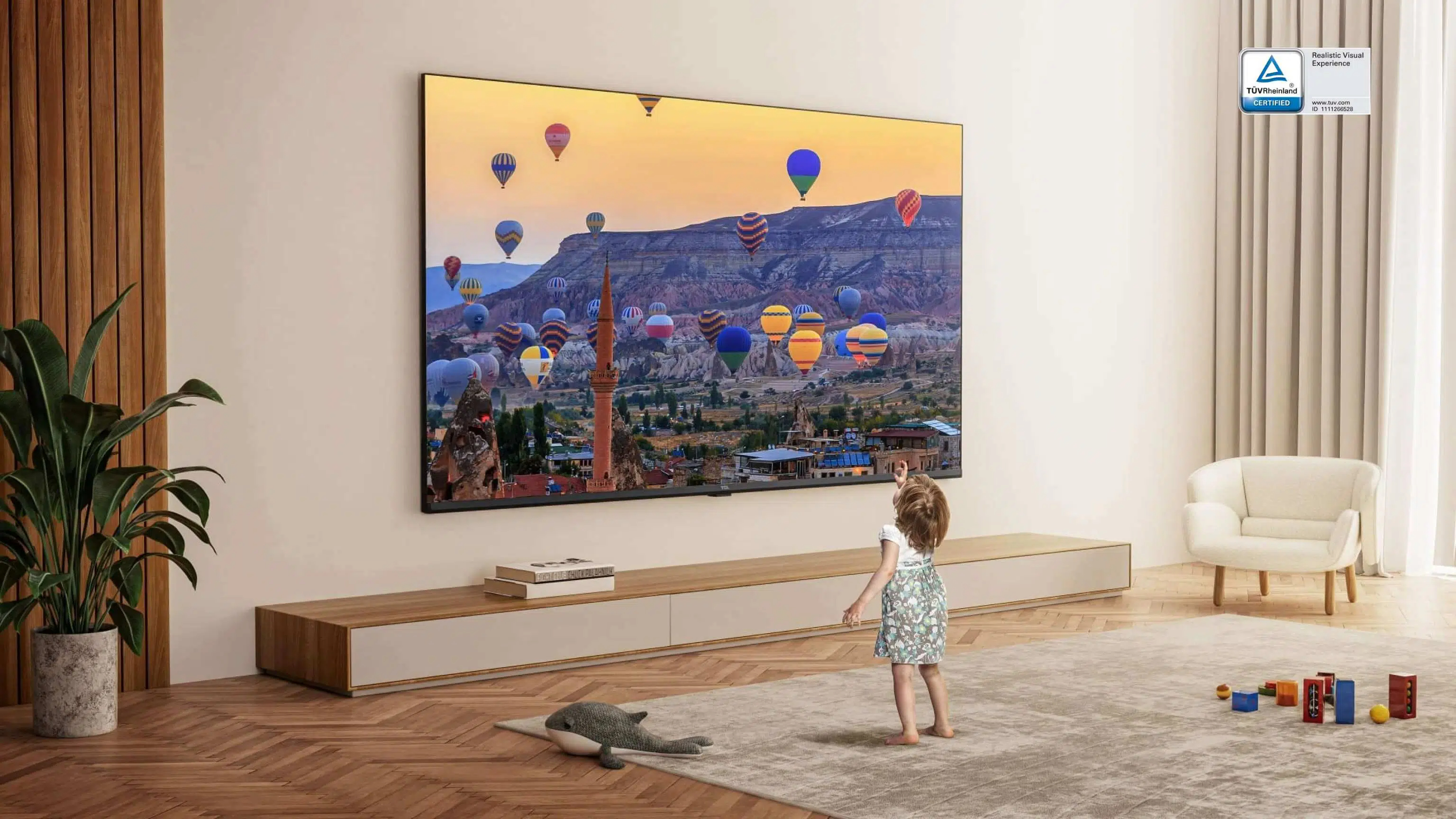
The year is coming to an end, and as a result, you may justifiably be wondering when we’re going to hear about the TV tech treats that 2024 will bring to the table.
Thankfully, you won’t have to wait long as we’re expecting oodles of TV news to come from the CES 2024 trade show in Las Vegas at the start of January, where our intrepid team will be reporting live on all the latest announcements.
But, thanks to recent announcements from Hisense and TCL we already know one key trend – we’re going to see an influx of new 100-inch TVs with record-breaking max brightness levels.
This was most recently telegraphed by Hisense, which teased its 110-inch 10UX Mini LED TV mere days ago. Outside of its size, the 10UX’s headline feature is its 10,000 nits brightness figure.
The 10,000 nits figure is interesting because it’s not slightly higher than average – it's a gargantuan leap ahead of the pack. Most of this year’s flagship OLEDs struggle to go beyond 2000 nits, even with next-generation Micro Lens Array or QD-OLED tech included.
The 10UX's other “big” rival, the 98-inch TCL X955, also has a quoted 5000 nit max brightness, making it in theory half as bright. So it makes sense for Hisense to make a big song and dance about how bright the TV can theoretically go.

To be completely transparent, I haven’t had a chance to directly check out the TV yet – one of the team is hoping to have an opening look at the 10UX when Hisense shows it off at CES.
But I do have a concern about Hisense's overt focus on selling nits, and by extension max brightness as the most important aspect of picture quality.
If you’re not sure what a nit is, by all means check out our 'what is a nit' explainer, but the short version is that it is a measurement of luminance, with each nit equating to roughly one candle’s worth of light per square metre. Most current HDR standards focus on 1000 nits, as a benchmark, but recently more and more shows and movies have gone beyond that – we use Pan as a test disk despite it being a terrible movie as it’s mastered to 4000 nits.
A high nit count can improve picture performance in certain situations. Most recently this was showcased when I, along with other members of the What Hi-Fi? reviews team, compared the Panasonic MZ980 and Panasonic MZ1500 TVs in our test rooms. The MZ1500 can go noticeably brighter than the MZ980 thanks to its use of a Panasonic Master OLED Pro, rather than a standard OLED, panel. The Pro has extra heat dissipation layers that mean it can be pushed harder to produce a brighter image.
In all if our testing, this meant the MZ1500 was able to offer significantly more detail in bright scenes. Watching Top Gun: Maverick, there was a wonderful hue of colours in the skyline surrounding the sun and higher levels of detail in the flames emanating from Maverick's jet plane. Running the same scene on the MZ980, the picture frequently lacked detail in these sections, only showing blanket white.
However, the benefits of a higher max brightness can only truly be enjoyed if a set can offer equally impressive black-level performance, where a lower nit count is better. OLEDs are the master at this as they charge individual pixels to create light, rather than the entire backlight to create images, as LCD sets do. This is why OLEDs offer perfect 0 nits blacks.
Mini LED sets, such as those detailed by Hisense and TCL, are based on LCD, which in my experience doesn't match the black levels of OLEDs. This was even the case with the What Hi-Fi? Award-winning TCL C845K, which offers great picture performance for its price but still couldn't match the black-level performance of entry-level OLEDs during our checks. Though its performance was good, we still detected elements of black crush, where details in very dark scenes that were visible on OLEDs were lost on the TCL.
We also notice blooming issues during high-contrast picture scenes that mix intense light and dark areas, which is again due to the fact Mini LED uses a backlight, albeit one with more defined dimming zones than a basic LCD.
This is the main reason many TV makers currently favour OLED over Mini LED for their most expensive sets. It’s also why, while big nit counts sound cool, I feel slightly uncomfortable with many companies’ push to make max brightness the main metric for image quality.
MORE:
These are the best TVs money can buy
Check out our picks of the best OLED TVs
Need something to game on? These are the best gaming TVs we’ve reviewed







